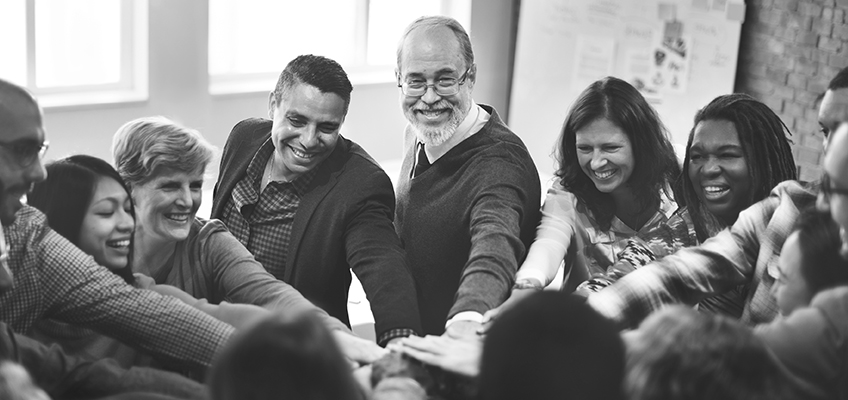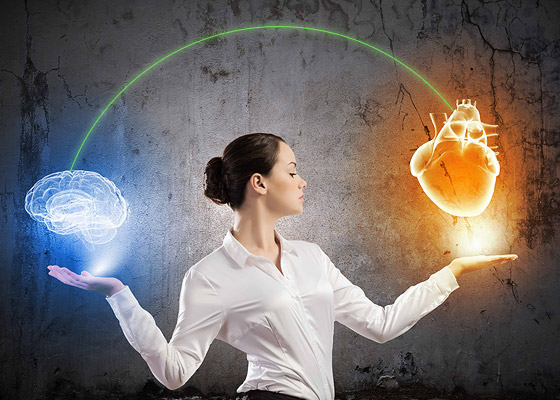
Making Life’s Deepest Connection
When a grandmother opens the door and is surprised to find her grandkids standing on her doorstep, all eyes fill with love and light. It reminds us of the timeless, heartfelt connections possible in human relationships.
When human beings connect in this way, it is a form of what is called social coherence, one of the deepest resonate emotions we can feel.
There are times in each of our lives when we are likely to experience such strong, unconditional connections. It may happen with loved ones, friends or in a meeting at which everyone shares similar interests and objectives. When people, especially groups of people are able to get in sync, or on the same wavelength, everyone who is present feels it.
Sometimes social coherence manifests simply as a strong bond or sense of connection. Other times it is characterized by an unmistakable pulse that travels through each member of a group, small or large. The unspoken message that circulates is a sense or knowing that their connection is special and with uplifting benefits.
Perhaps, for example, you or someone you know is part of a family that gets along fabulously, whose disagreements are resolved quickly and arguments are friendly, respectful and rare. Or, ever watched an athletic competition in which one or both teams seem to be on fire? How about co-workers who gel with one another in pursuit of a long desired goal or the completion of a critical project?
The emotions triggered by such levels of coherence can be indelibly stamped upon our hearts and minds. Recalling them anytime can brighten a day or inspire a wave of creativity and achievement.
The Art of Social Coherence
“Social coherence,” the authors of HeartMath’s recently published book, Heart Intelligence, “relates to pairs, family units, groups, or larger organizations in which a network of relationships exists among individuals who share common interests and objectives.
“(It is) a stable, harmonious alignment of relationships that allows for the efficient flow and utilization of energy and communication required for optimal collective cohesion and action. … There is freedom for the individual members to do their part and thrive while maintaining cohesion and resonance within the group’s intent and goals.”
Two key elements of social coherence among group or team members, writes HeartMath LLC Executive Vice President Howard Martin, are that “group members be attuned and emotionally aligned and that the group’s energy is regulated by care, not by threat or force from others.”
The Growing Need for Social Coherence
Recognition of the importance of social coherence has increased across societies around the world in recent years thanks partly to the growing sophistication of global communications, but also to the elevation of global consciousness.
That awareness has reached people in the most remote parts of the world, so that now much of our planet has become aware of our most dire problems and the critical necessity for solutions.
The point is, the need for greater coherence and cooperation among individuals, groups and nations is as great today as it has ever been in human history. Discord and violence between people is on the rise. Worldwide poverty increases daily. Homelessness and massive refugeeism threaten the infrastructures and very fabric of nations. And global climate change portends horrendous calamities for all of humanity and the viability of our planet.
Social Incoherence in the Workplace
In 2012, 65 percent of Americans cited work as a top source of stress, according to the American Psychological Association’s annual Stress in America Survey. One of the top sources of workplace stress was lack of social support, and research has shown dealing with toxic people can drive your brain into a stressed-out state that should be avoided at all costs.
A high percentage of adults surveyed say stress, especially at work, can contribute to major illnesses such as heart disease, depression and obesity. Scientific studies have confirmed for decades this is true.
“While awareness about the impact stress can have on emotional and physical health seems to be present,” according to HeartMath’s Science of the Heart, “many working Americans continue to report symptoms of stress, with 42% reporting irritability or anger, 37% fatigue, 35% a lack of interest, motivation or energy, 32% headaches and 24% upset.
Workplace stress contributes to higher health-care costs and lower productivity across the United States. According to the American Institute of Stress, the annual toll on American industries is $300 billion. So, it is not hard to imagine that the costs are skyrocketing globally.
Personal Coherence – Then Social Coherence
Recall that a key characteristic of social or group coherence is stable and harmonious alignment of relationships. Alignment of an individual’s mental, emotional and physical systems also leads to the efficient flow and utilization of energy in the individual and indicates personal coherence.
“Through our continued research,” write HeartMath Institute Director Rollin McCraty and HeartMath founder Doc Childre, “we found that many beneficial things happen inside the body when we are in a more coherent state.”
More specifically, HeartMath calls this a heart-coherent state, or simply heart coherence. It is known to lead to synchronization of breathing rhythms and blood-pressure rhythms as well as brain rhythms and heart rhythms.
“Just being in this heart-coherent state for a couple of minutes has been found to lower mean blood pressure by an average of 10 points in people with high blood pressure,” McCraty and Childre explain in the article.
The heart-coherent state can:
Suggest that each member your group use the following HeartMath tool to increase heart coherence:
Heart Coherence© Technique †
1. Breathe and calm yourself in whatever ways you choose.
2. Choose something you appreciate and radiate the feeling of appreciation to it for about 2 minutes.
3. Breathe and instate the feeling of cooperation between your heart, mind and emotions.
† This is an abbreviated version of the Heart Coherence Technique.
As the heart coherence of a group’s individual members increases, the probability of group, or social coherence increases. Action on the group’s particular projects becomes more natural, fluid, insightful and inspired. These projects may include fundraising, serving the needy, finding a solution to a major problem in the community, increasing a company’s productivity, reducing health-care costs, etc.
HeartMath has identified the following benefits from increasing social coherence:
HeartMath Institute plans to launch a new program in the future aimed at researching social coherence. Thanks to a generous donor, HMI researchers will be able to lay the groundwork for developing p tools to assist various groups of people to unfold and enhance their social coherence skills. Eventually, these will include couples, families, classrooms, athletic teams, workplace teams, organizations and communities.
We would love to hear your ideas and perspectives on increasing social coherence.

